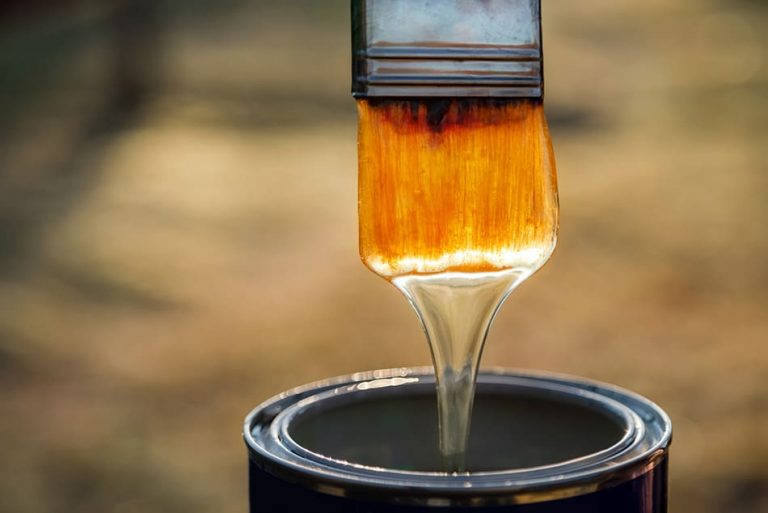The Varnish: A Comprehensive Guide To Understanding And Using Varnish In Your Projects
Varnish is an essential element in woodworking and finishing, offering both aesthetic and protective qualities to various surfaces. This article delves into the intricacies of varnish, its types, application methods, and the best practices to achieve stunning results in your projects. Whether you're a professional woodworker or a DIY enthusiast, understanding varnish can significantly enhance the quality and longevity of your work.
In this comprehensive guide, we will explore the different types of varnishes available, their specific applications, and how to choose the right one for your needs. Additionally, we'll provide tips on application techniques to ensure a flawless finish every time. By the end of this article, you will have a solid understanding of varnish, empowering you to select and apply it with confidence.
So, let's embark on this journey to discover the world of varnish, equipping you with the knowledge necessary to elevate your woodworking skills and achieve professional-quality finishes.
Table of Contents
- What is Varnish?
- Types of Varnish
- How to Choose the Right Varnish
- Varnish Application Techniques
- Common Mistakes to Avoid When Using Varnish
- Safety Tips for Working with Varnish
- Caring for Varnished Surfaces
- Conclusion
What is Varnish?
Varnish is a transparent, hard, protective finish or film primarily used in woodworking. It is made from a combination of resins, oils, and solvents, which, when applied to wood or other surfaces, dry to form a durable coating. Varnish enhances the natural beauty of wood while providing protection against moisture, UV rays, and wear.
Characteristics of Varnish
- Provides a glossy or satin finish, enhancing the grain of wood.
- Offers excellent durability and resistance to scratches and chemicals.
- Available in various formulations, including oil-based and water-based options.
- Can be used on a variety of surfaces, including wood, metal, and concrete.
Types of Varnish
There are several types of varnish available, each with its unique properties and uses. Understanding these types can help you select the most suitable one for your project.
1. Oil-Based Varnish
Oil-based varnishes are known for their durability and rich finish. They penetrate deeply into the wood, providing excellent protection and enhancing the natural color of the wood.
2. Water-Based Varnish
Water-based varnishes are becoming increasingly popular due to their low odor and quick drying time. They are easy to clean up and provide a clear finish that does not yellow over time.
3. Spar Varnish
Spar varnish is specially formulated for outdoor use. It contains UV filters and provides a flexible finish that can withstand harsh weather conditions.
4. Polyurethane Varnish
Polyurethane varnish is a versatile option that offers excellent durability and water resistance. It is available in both oil-based and water-based formulations.
How to Choose the Right Varnish
Selecting the right varnish for your project involves considering several factors:
- Surface Type: Different surfaces may require different types of varnish.
- Desired Finish: Consider whether you want a glossy, satin, or matte finish.
- Durability Needs: Assess the wear and tear the surface will face.
- Drying Time: Choose a varnish that fits your project timeline.
Varnish Application Techniques
Proper application is crucial for achieving a smooth and even finish. Here are some techniques to consider:
1. Surface Preparation
Ensure the surface is clean, dry, and free from dust or debris. Sand the surface lightly to promote adhesion.
2. Application Tools
- Brush: Use a high-quality brush for oil-based varnishes.
- Roller: A foam roller can be effective for larger surfaces.
- Spray: For an ultra-smooth finish, consider using a spray gun.
3. Applying the Varnish
Apply varnish in thin, even coats. Allow each coat to dry completely before applying the next one. Sand lightly between coats to ensure a smooth finish.
Common Mistakes to Avoid When Using Varnish
To achieve the best results, be aware of these common mistakes:
- Applying too thick of a coat.
- Skipping surface preparation.
- Not allowing adequate drying time between coats.
- Using the wrong type of varnish for the project.
Safety Tips for Working with Varnish
When working with varnish, safety should be a priority. Here are some essential tips:
- Work in a well-ventilated area to avoid inhaling fumes.
- Wear gloves and a mask to protect your skin and respiratory system.
- Store varnish in a cool, dry place away from heat sources.
Caring for Varnished Surfaces
To maintain the beauty and integrity of varnished surfaces, follow these care tips:
- Clean regularly with a soft, damp cloth.
- Avoid harsh chemicals that can damage the finish.
- Reapply varnish as needed to restore protection.
Conclusion
Varnish plays a vital role in woodworking and finishing, providing both beauty and protection to various surfaces. By understanding the different types of varnish, how to choose the right one, and the techniques for application, you can achieve stunning results in your projects. Remember to take safety precautions and care for your varnished surfaces to ensure their longevity. If you found this article helpful, please leave a comment, share it with others, or explore more of our content for further learning!
References
- Wood Magazine. (2023). Understanding Varnish: A Comprehensive Guide.
- The Family Handyman. (2023). Choosing the Right Finish for Your Wood Project.
- Fine Woodworking. (2023). Techniques for Applying Varnish Like a Pro.
Exploring The Life And Achievements Of David Ellison
Guillermo: A Deep Dive Into The Life And Influence Of A Rising Star
Mastering 1v1LOL: The Ultimate Guide To Dominate Your Opponents


